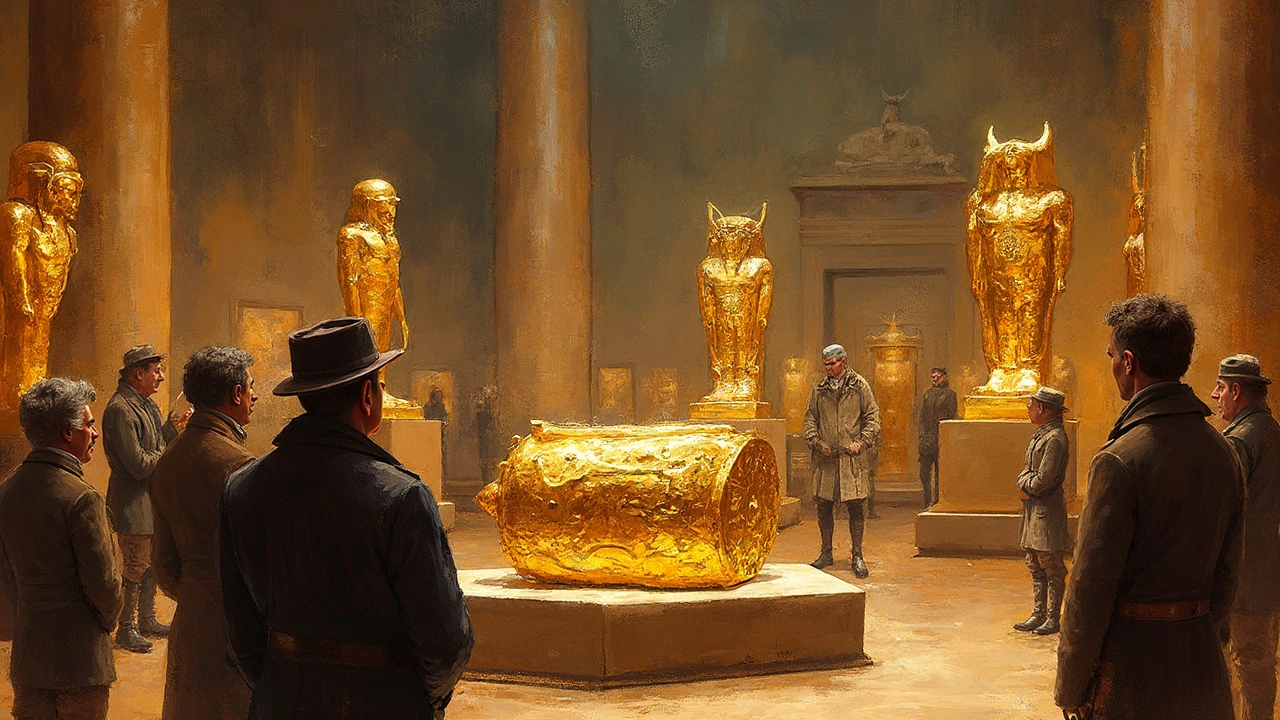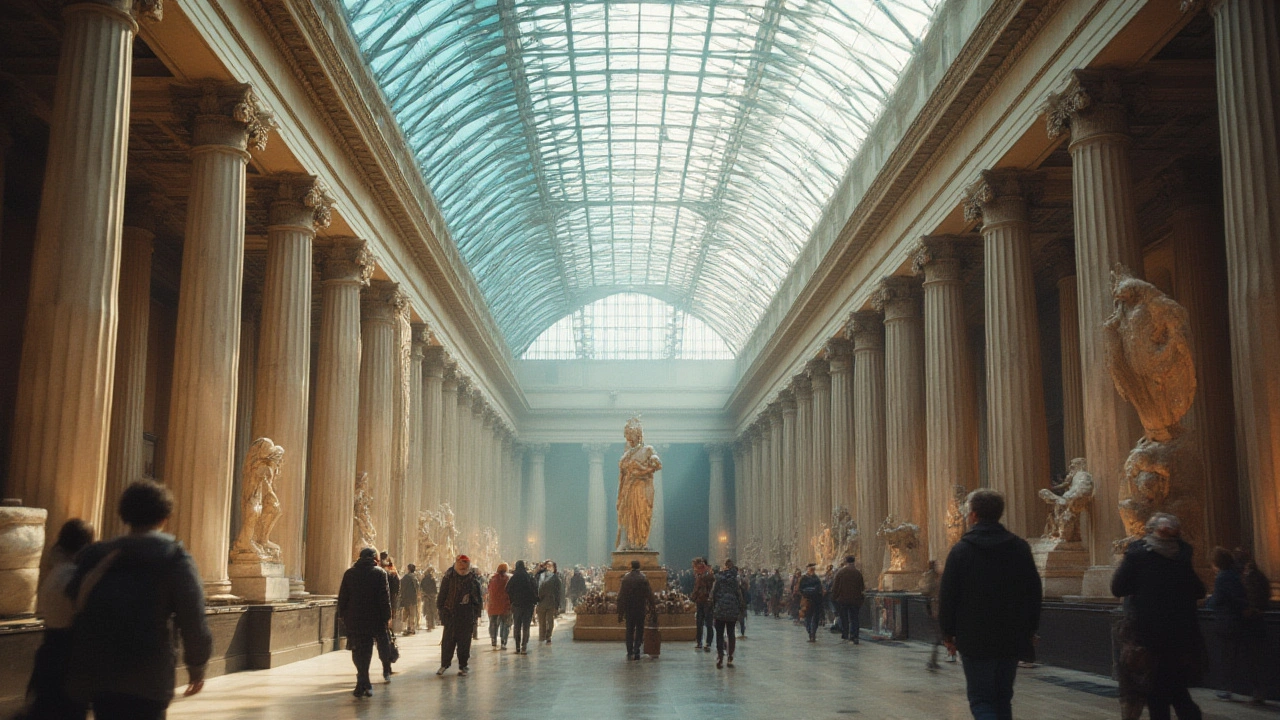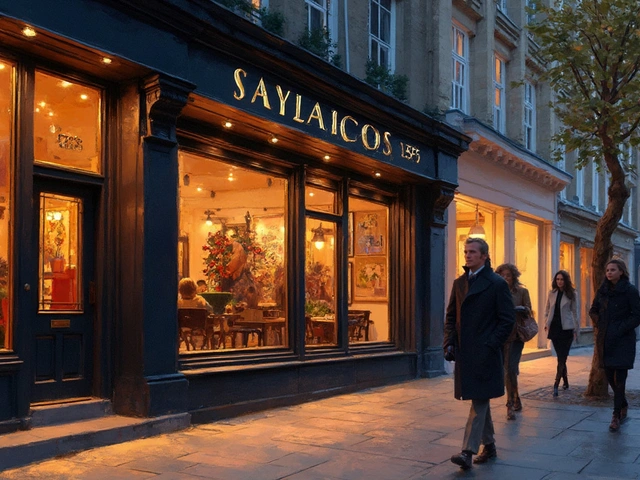
Ever wondered why the British Museum is so famous? Well, imagine standing in a place where history comes alive, right before your eyes. Located in the heart of London, this museum isn’t just another stop on the tourist trail. It’s a gateway to over two million years of history—think about that! From stunning Egyptian artifacts like the Rosetta Stone to intricate Aztec carvings, the collection here is mind-blowing.
But here's the thing: with so much to see, it's easy to get overwhelmed. So, how do you make the most of your visit? Start with a plan. Pick a few galleries that spark your interest, and don't rush. It's not a race! Whether you're drawn to ancient Greece or the mysteries of the Middle Ages, there's plenty to soak in.
And guess what? Entry is free! Yep, you can explore a world-class museum without spending a penny—unless you fancy a guidebook or a cup of tea at the café. But more about that later. For now, get comfy, and let's unwrap the secrets of the British Museum together!
- Overview of the British Museum
- Must-See Artifacts
- Visitor Tips and Tricks
- Events and Exhibitions
- Planning Your Visit
Overview of the British Museum
The British Museum, smack dab in London, is like no other place on earth. It opened its doors way back in 1753, and it's been wowing visitors ever since. What's special? For starters, it's one of the largest and most comprehensive museums in the world, showcasing a wide range of artifacts from every corner of the globe. We're talking a whopping eight million pieces!
Why such a buzz about it? Well, the museum's collection spans millions of years of human history. Whether you're keen on Egyptian mummies, the iconic Rosetta Stone, or the fascinating Elgin Marbles, there's no shortage of amazing things to see. The museum is organized into various departments, like African, American, and European collections, each crammed with stuff that's steeped in history.
This amazing museum attracts over six million visitors each year, making it a top spot for both tourists and locals. Guess what? It's not just famous for what's inside. The architecture itself is a treat. You can't miss the glass-roofed Great Court, which is basically a feast for the eyes.
The coolest part? It's mostly free. You don't need to break the bank to enjoy a day wandering through centuries of history. However, do keep an eye out for special exhibitions. These typically have an entry fee but often feature unique displays you won't see anywhere else.
Planning your visit? It's a smart move to check the museum's calendar ahead of time because there's often a lineup of events and limited-time exhibitions worth catching. Whether you're a history buff or just in it for the experience, the British Museum promises a truly timeless journey through artifacts.
Must-See Artifacts
If you're planning a trip to the British Museum, there's a shortlist of artifacts you simply can't miss. These iconic pieces not only define the museum's reputation but also offer a glimpse into ancient civilizations and their legacies. Whether you're a history buff or just curious, here’s what should be on your radar.
First up, the Rosetta Stone, which is pretty much the museum's rock star. Discovered in 1799, it's famous for being the key to understanding Egyptian hieroglyphs. Standing in front of it, you'll realize why it's not just a slab of stone but a bridge to the past.
Then, head over to the Egyptian mummies. The museum boasts an impressive collection, but the standout has to be the mummified remains of Gebelein Man. Over 5000 years old, he's literally a slice of pre-Pharaonic life, preserved naturally by desert sands.
Don't skip the Elgin Marbles, part of the Parthenon sculptures from ancient Greece. They’re a hot topic in the art world due to their history and controversy, but seeing them up close, you'll appreciate the craftsmanship and intricate detail.
- Assyrian Lion Hunt Reliefs: Found in the galleries dedicated to Mesopotamia, these panels depict royal lion hunts and are a testament to Assyrian art.
- The Lewis Chessmen: Ever fancy medieval chess pieces? These 12th-century figures have endured as one of the most complete sets in existence.
- Babylonian treasures like the Cyrus Cylinder, often dubbed the 'world's first charter of human rights'.
With thousands of pieces to check out, a little planning goes a long way. Grab a map at the entrance and prioritize these highlights. Your visit won't just be a walk through a museum—it's like stepping into a time machine!

Visitor Tips and Tricks
Visiting the British Museum can be a bit overwhelming, so here are a few insider tips to make your journey both fun and efficient. First things first, aim to arrive early. The museum opens at 10 a.m., but being there at opening gives you a head start before it gets crowded. Weekdays are generally less busy than weekends, so keep that in mind if you're flexible with your schedule.
Once you're inside, make a beeline for the artifacts you’re dying to see. The Rosetta Stone is a must for many folks, as well as the Egyptian mummies and Parthenon sculptures. These exhibits are always popular, so getting to them first can help you enjoy them without the hustle and bustle.
Planning to spend a lot of time in the museum? Wear comfy shoes! The galleries span several kilometers, and trust me, you don’t want your feet to call it quits halfway through. Also, lockers are available for any bulky bags you don’t want to carry around.
Curious about making your visit more informative? Grab an audio guide or join one of the museum’s guided tours. These are fantastic for getting in-depth insights you might miss on your own. And for the kiddos, the museum offers activity trails and hands-on experiences to keep them engaged.
Remember, the museum has a wonderful café and restaurant, but if you want to save on meals, bringing your own packed lunch is an option—there are designated spots where you can eat. Of course, hitting the café for a classic British tea isn't a bad idea either!
Finally, take a peek at the museum’s calendar for any special events or temporary exhibitions. Sometimes there are late-night openings or themed events that offer a unique twist on your typical visit.
Events and Exhibitions
Visiting the British Museum can feel like stepping into a storied past, but it's not just the permanent collection that draws millions of visitors each year—it's also the dynamic lineup of events and exhibitions that keep things fresh and exciting. These special exhibits often spotlight art and artifacts from all around the globe, adding fresh layers of context and understanding to what you already know.
Why are these exhibitions a big deal? First off, they usually feature rare items on loan from other museums or private collections, so it’s a chance to see something unique. Recent shows have included anything from the intricate artefacts of ancient Maori tribes to the colorful culture of the Aztecs. For the tech-savvy, interactive exhibits are sometimes held, making the experience even more engaging and educational.
Planning to attend any exhibitions? Here’s a pro tip: Check the museum's online calendar before you go. Some exhibitions require a separate ticket, and these can sell out fast—especially for crowd favorites like the Egyptian mummies or Greek sculptures. Also, keep your eyes peeled for evening events or "museum late" nights. These are not just a chance to miss the daytime crowds; they often come with talks, live performances, and even wine tastings. Who said learning couldn't be a blast?
And let’s not forget the educational workshops and talks. Whether you're into art history or archaeology, there’s usually something on offer for all ages. From kids' storytelling sessions to in-depth lectures on ancient civilizations, there's always an opportunity to learn something new.
- Book tickets for special exhibits in advance—these can often be limited.
- Keep an eye on "museum late" nights for a unique experience.
- Don't miss the workshops—they often provide hands-on experiences you won't forget.
Ready to dive into an exhibition? Whether you’re a history buff or just looking for something different to do in London, the British Museum’s events and exhibitions are sure to add a little cultural sparkle to your day.

Planning Your Visit
Visiting the British Museum can be an incredible experience. But to make sure it's as enjoyable as possible, it's smart to plan ahead. The museum is located at Great Russell Street, right in the heart of London. It's easy to get there by public transport, with the Tottenham Court Road, Holborn, and Russell Square tube stations nearby.
First things first, check the opening times. The museum is open daily from 10:00 AM to 5:30 PM, and on Fridays, some galleries remain open until 8:30 PM, giving you a chance to explore after hours. Entry is free, but if you want to dive deeper, there are special exhibitions that might have a fee. These exhibitions often explore unique themes or collections, so it's worth checking the current schedule on their website before your visit.
It's no secret that this place can get busy, especially during school holidays and weekends. If you hate crowds, aim for a mid-week visit. And don’t forget to book a free ticket in advance, especially for the popular exhibits.
If you want to save time and learn the most, consider joining a guided tour. The museum offers various tours and audio guides to enhance your experience. This can really help you understand the stories behind each artifact.
- Don’t miss out on amenities: There are several cafes and a restaurant in the museum. It might be a good idea to grab a light meal to keep your energy up for exploring all those amazing galleries.
- Travel light: The museum has a cloakroom where you can store bags, but it's easier to navigate the exhibits with just the essentials.
Want to bring home a memory? Swing by the museum shop for some unique goodies related to the exhibitions. A little keepsake of your visit can be a great souvenir.
Finally, keep an eye out for special events and activities. The British Museum often hosts workshops, talks, and family-friendly events that can add an extra layer of fun to your visit. So, why not make a day of it?
Categories
Popular Articles

Feb 25 2025

Nov 11 2025





